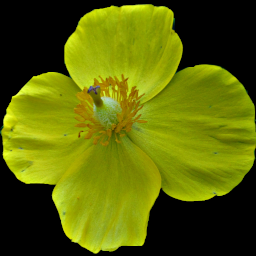 A heaping helping of ragweed, easily growing to 9 feet (3 m) if it likes the location (Gray says to 6 m or 18 feet), and letting loose a raging torrent of allergenic pollen in early September, as these plants in Beechview were doing. The harmless and beautiful goldenrods that bloom at the same time often take the blame for hay fever, but this huge yet somehow inconspicuous weed, and its even more common little cousin A. artemisiifolia, are the real culprits. These plants appear to be what Gray describes as the variety integrifolia: the leaves are mostly three-lobed, except for a few unlobed lanceolate leaves up near the flowers.
A heaping helping of ragweed, easily growing to 9 feet (3 m) if it likes the location (Gray says to 6 m or 18 feet), and letting loose a raging torrent of allergenic pollen in early September, as these plants in Beechview were doing. The harmless and beautiful goldenrods that bloom at the same time often take the blame for hay fever, but this huge yet somehow inconspicuous weed, and its even more common little cousin A. artemisiifolia, are the real culprits. These plants appear to be what Gray describes as the variety integrifolia: the leaves are mostly three-lobed, except for a few unlobed lanceolate leaves up near the flowers.
The generic name Ambrosia, from the Greek word for “immortal,” probably means that, as weeds go, these things are hard to kill. It was probably not intended to suggest that the Olympian gods supped on ragweed.
Gray describes the genus and the species:
AMBRÒSIA [Tourn.] L. RAGWEED. Fertile heads 1-3 together, sessile in axils of leaves or bracts, at the base of racemes or spikes of sterile heads, Merile involucres flattish or top-shaped, of 7-12 united bracts, containing 6-20 staminate flowers, with or without slender chaff intermixed. Anthers almost separate. Fertile involucre (fruit) ellipsoid, obovoid, or top-shaped, closed, pointed, resembling an achene and inclosing a single flower; elongated style-branches protruding. Achenes ovoid. — Coarse homely weeds, with opposite or alternate lobed or dissected leaves, and inconspicuous greenish flowers, in late summer and autumn; ours annuals, except the last. (The Greek and later Latin name of several plants, as well as of the food of the gods.)
Sterile heads in single or panicled racemes or spites, the involucre regular.
Leaves opposite, only once lobed; sterile involucre 3-ribbed on one side.
A. trífida L. (GREAT R.) Stem stout, 1-6 m. high, rough-hairy, as are the large deeply 3-lobed leaves, the lobes oval-lanceolate and serrate; petioles margined; fruit obovoid, 5-6-ribbed and tubercled. — Rich soil, common westw. and southw., much less so northeastw. Var. integrifòlia (Muhl.) T. & G. Smaller, with the upper leaves (or all of them) undivided, ovate or oval.—Same habitat, not rare.











